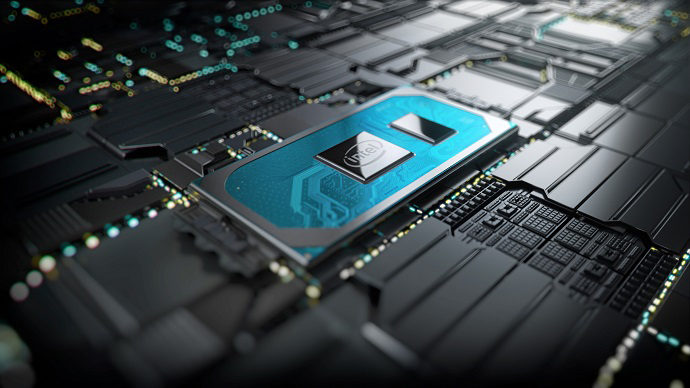
Intel Ice Lake CPUs are finally shipping the company says, as it aims to take the fight back to a resurgent AMD. Their standout feature: an 18 rise in average instruction per cycle (IPC) compared to the Skylake architecture.
The Intel Ice Lake CPUs comes in two flavours, a U and Y series, neither of which are heavy processors: Intel is targeting the entertainment market on mobile devices and thin, lightweight laptops.
It is also hoping to offer something to those working in the media content creation sector. As it emphasises, the new processors can “handle 4K video editing and high-res photo-processing like a pro—fast, while retaining high visual quality—both previously a stretch for thin and light devices.”
In a performance comparison the CPU performance for Ice Lake sees an 18 percent improvement in IPC when operating at the same frequency and memory configuration of other CPUs, claims Intel. However, it appears to have based this comparison on Intel’s own Skylake, a 6th generation core microarchitecture which was released in 2015.
Its 10th generation core processors will be available for the Core i3, i5 and i7 processors, while its thermal design power range is 9W, 15W or 28W.
 In terms of stats the Intel Ice Lake Y-series is a 10nm Quad Core CPU with a Low-Power Double Data Rate (LPDDR4) memory of x-37339. It has an LL cache size of up to 8mb and a max turbo frequency of 4.1GHz.
In terms of stats the Intel Ice Lake Y-series is a 10nm Quad Core CPU with a Low-Power Double Data Rate (LPDDR4) memory of x-37339. It has an LL cache size of up to 8mb and a max turbo frequency of 4.1GHz.
Interestingly not everything in the new 10nm processors is actually 10nm based as the Platform Controller Hub (PCH) accompanying chip is being produced in a 14nm format.
The embedded graphics engine is Intel’s own Gen11 Graphics engine which it has claimed will give twice the performance of its AMD’s APUs.
Intel has integrated what it calls Deep Learning boosts (DLBoost) into its next Gen graphics engine that it says will provide a 2.5x performance increase when operating on AI workloads via new vector instructions.
Intel Ice Lake and Its Sunny Cove Microarchitecture
Intel’s 10nm CPUs are designed using the new Sunny Cove microarchitecture which focus on single-thread performance.
Sunny Cove will now be the design architecture on which Intel’s next- generation Xeon servers and Intel Core processors will be based. With Sunny Cove Intel are introducing new algorithms designed to reduce latency alongside an increase in size of the key buffers and caches which optimise data-centric workloads.
One area that Intel is hoping to make an impact with its new architecture is in the field of cryptography where it expects Sunny Cove to bring new performance increasing instructions that can be used in vector AES and Secure Hash Algorithm (SHA-NI) cryptography standards.
Project Athena
Intel also launched Project Athena this week, which sees the company strive to set new standards in high-end laptop computers that are based on performance and AI usability, rather than just thickness and battery power efficiency.
Intel says its engineers and social scientists have developed a set of predefined key experience requirements, which it believes should be met by OEM designs. This will be done through open laps that will be placed in to be announced regional hubs. ODMs and independent hardware vendor are expected to take part in Project Athena by coming into these labs for as Intel states: “component assessment and solution pathfinding aligned to the Project Athena vision.”
Each lap will have experienced engineers on site that can tune and test the power and performance capabilities of laptop components such as SSDS embedded controls, haptics and wireless functions.
Josh Newman, Intel VP of PC Innovation Segments commented: “Across the industry, we each play an important role in delivering the advanced laptops of today and the future. Project Athena Open Labs are a critical step in enabling more extensive, day-to-day collaboration with the components ecosystem to continuously raise the bar for innovation across the platform.”







